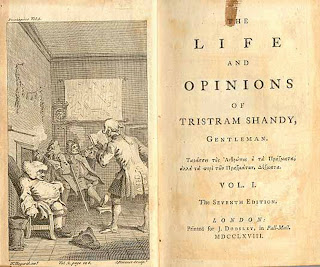 |
| Wading Birds, 1949, Vancouver Art Gallery |
 One of the most intriguing aspects of research is its ability to lead you in directions you never thought you would go. With my first year review looming I am surrounded by Graham Sutherland, preparing to submit a detailed thesis excerpt on the tapestries he designed for Dovecot in 1949/1950. The first work, Wading Birds, was causing much consternation as I could find no source material for his choice of subject matter. Was he painting birds? No. Were his contemporaries painting such birds? No. So I headed to the National Library of Scotland, ordered up a book on bird watching in France and listed all of the wading birds to be found in the Cote d'Azur region. I knew that in the years leading up to the designing of the tapestry Sutherland had been spending a significant amount of time in the area, which had led to number of stylistic and compositional changes in his painting, evident in the tapestry design. After a bit of googling I found what I was looking for: the purple heron, undoubtedly the inspiration behind the tapestry design and its palette.
One of the most intriguing aspects of research is its ability to lead you in directions you never thought you would go. With my first year review looming I am surrounded by Graham Sutherland, preparing to submit a detailed thesis excerpt on the tapestries he designed for Dovecot in 1949/1950. The first work, Wading Birds, was causing much consternation as I could find no source material for his choice of subject matter. Was he painting birds? No. Were his contemporaries painting such birds? No. So I headed to the National Library of Scotland, ordered up a book on bird watching in France and listed all of the wading birds to be found in the Cote d'Azur region. I knew that in the years leading up to the designing of the tapestry Sutherland had been spending a significant amount of time in the area, which had led to number of stylistic and compositional changes in his painting, evident in the tapestry design. After a bit of googling I found what I was looking for: the purple heron, undoubtedly the inspiration behind the tapestry design and its palette.Providing light relief from Sutherland, I have been putting together small pieces of text on a selection of tapestries for Dovecot's forthcoming centenary celebrations in 2012. One of my favourite tapestries is Pause on the Landing (2005) designed by Patrick Caulfield for the British Library and woven by David Cochrane, Douglas Grierson and Naomi Robertson. This enormous tapestry of rich purple, blue and pink hangs on the stairwell of the conference centre at the library and it's subject is taken from Laurence Sterne's 18th century novel The Life and Opinions of Tristram Shandy, a Gentleman. Who would have thought such a book would be the favourite of a renowned Pop Artist? And who would have thought reading such a book would be a necessary element of researching 21st century tapestry?
'Is it not a shame to make two chapters of what passed in going down one pair of stairs? for we are got no further yet than to the first landing, and there are fifteen more steps down to the bottom; and for I aught to know, as my father and my Uncle Toby are talking in a talking humour, there may be as many chapters as steps: - let that be as it will, Sir, I can no more help it than my destiny: - A sudden impulse comes across me – drop the curtain, Shandy – I drop it – Strike line here across the paper Tristram – I strike it - and hey for a new chapter.'
 |
| Glasgow University Library Collection |
Through my research I have discovered that tapestry can be many things: funny, surreal, a reflection of nature as well as imagination.


